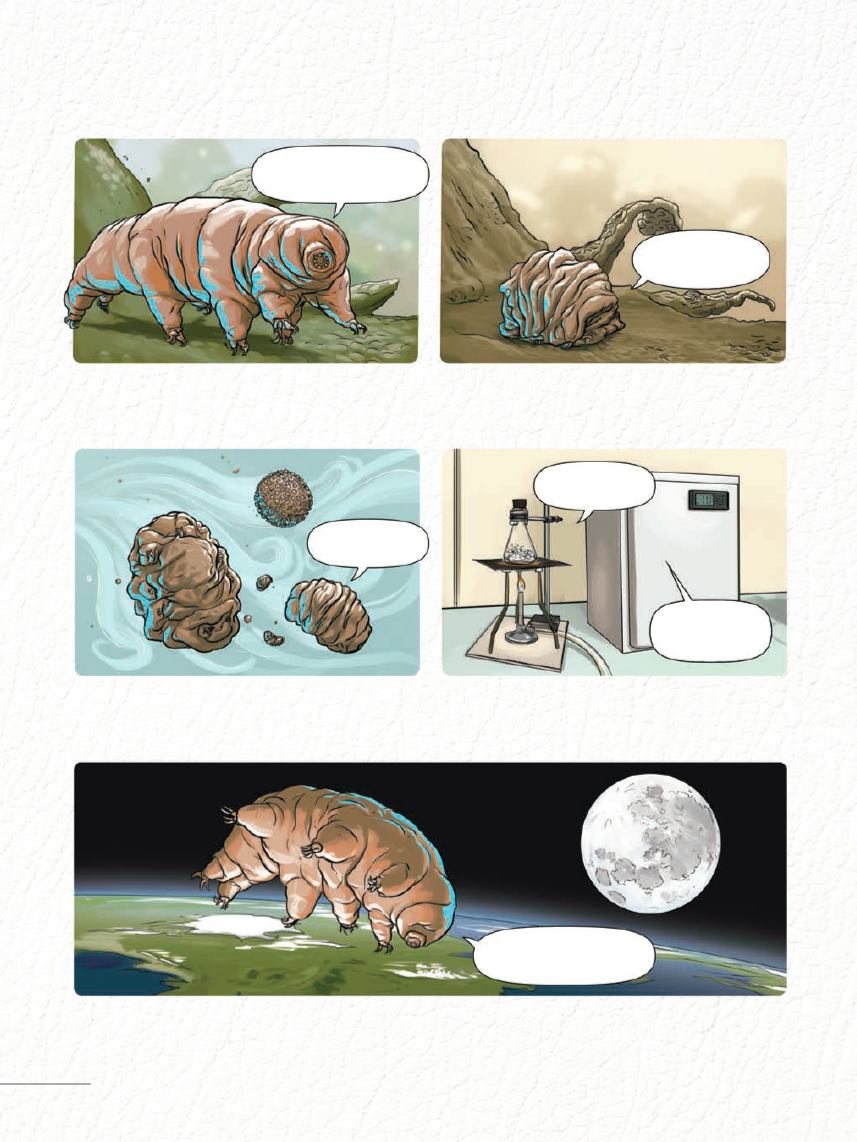
8
Tardigrade
means “slow walker.” Tardigrades use
hydraulics (body fluid pressure) to bend their legs,
which are tipped with sharp, curving claws.
T
ough
C
ritters
In 2007, the European Space Agency sent tuns and eggs up on a rocket to expose them to the vacuum of
space. They were also exposed to levels of solar radiation that would kill humans. After returning to Earth
ten days later and being rehydrated, two-thirds of the tuns survived the trip unharmed.
Tuns usually survive drying out. They and their eggs
may be carried on the wind to new places to start
new populations once they’re moistened again.
In temperature tests, tardigrades have survived
temperatures from –458˚ to 300˚ Fahrenheit (–272˚
to 149˚ Celsius) . . . way beyond human endurance!
Some people call me
a moss piglet.
I’m soooooooo
thirsty!
Wheeeeee!
Nah, we’re a
wee bit chilly.
Is it getting
warm in here?
It’s one giant leap for
water bears . . .
When there’s no water, tardigrades dry out. In this
state they are called tuns, and a sugar called trehalose
replaces water in the body to preserve the cells.


